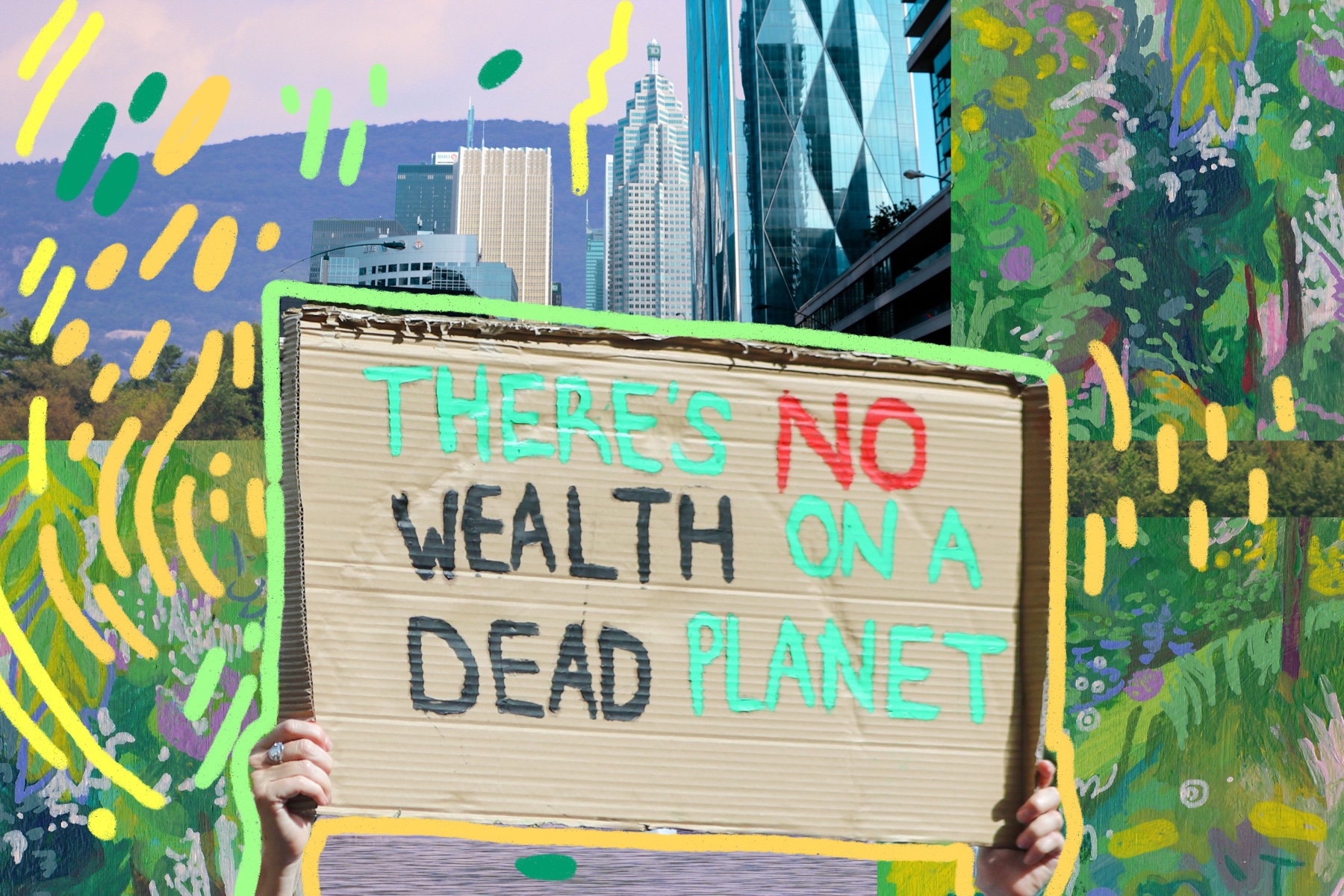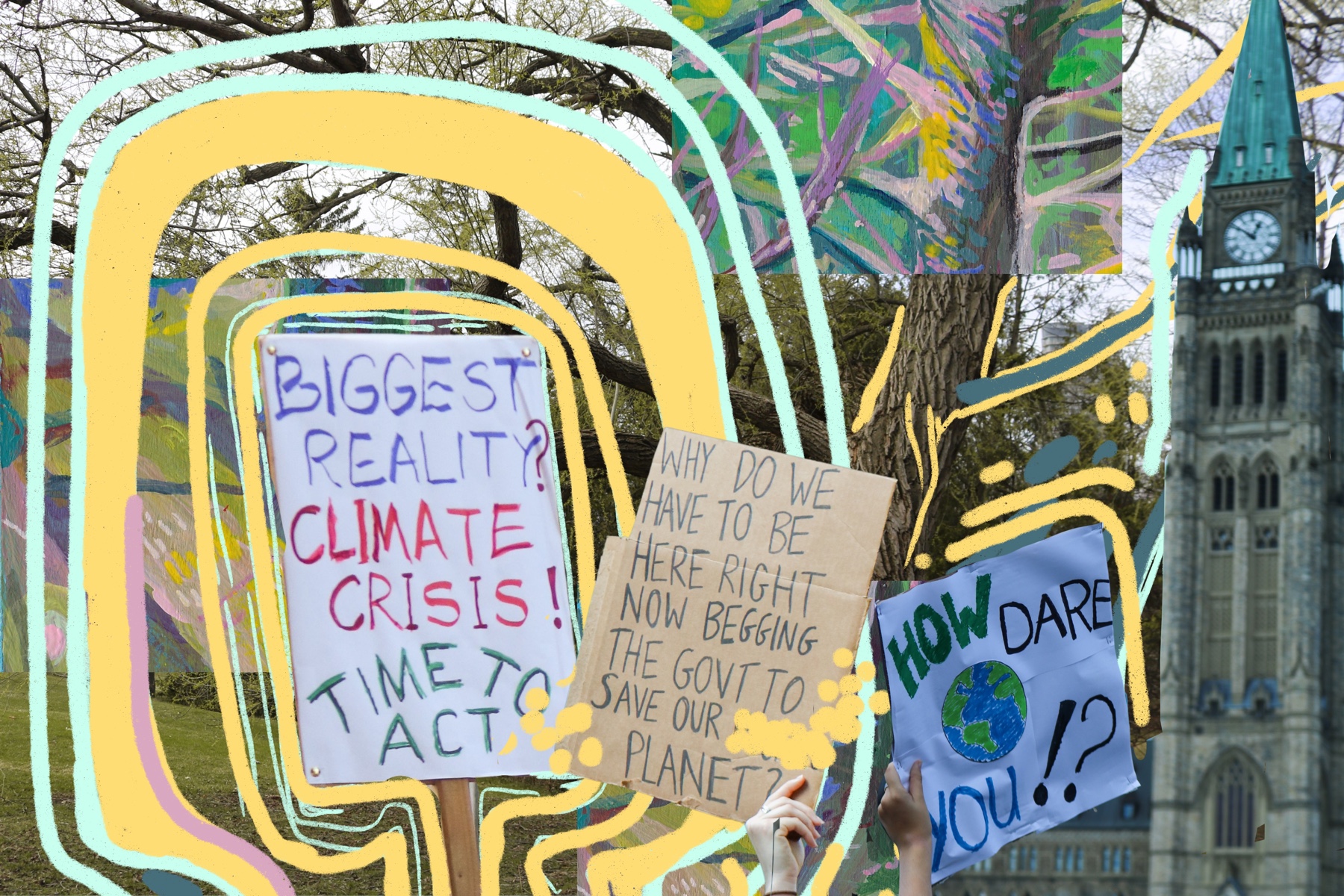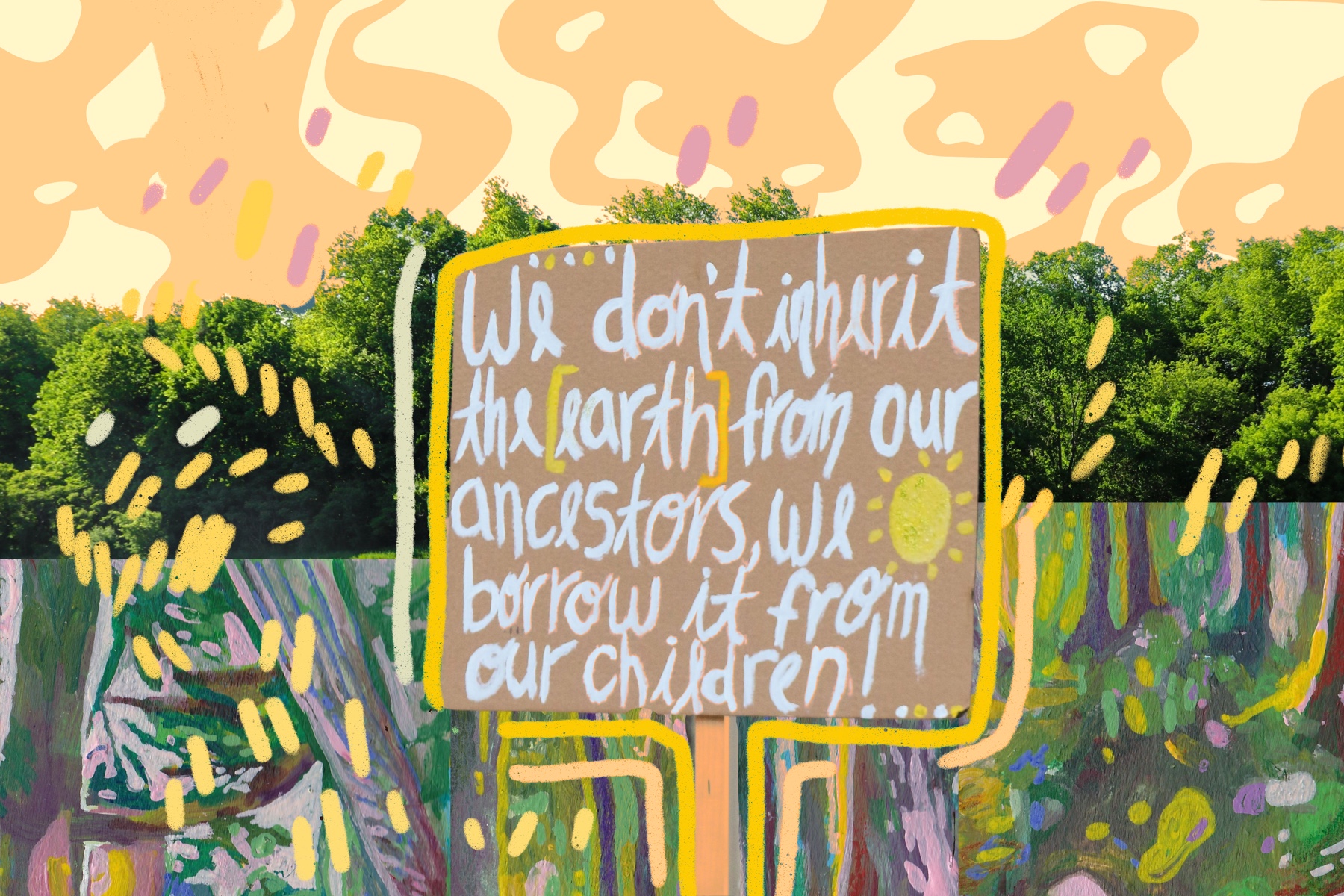Imagine a bunch of people riding their favourite roller coaster—we’re talking Behemoth or Leviathan-level here—and the person in the very front car pukes. After puking, the person continues to have fun and feels better, while the rest of the passengers have to deal with the streaks of flying vomit hurling towards them.
This is what carbon inequality feels like, except in reality, the vomit is the carbon footprint of the rich that’s accelerating climate change. The passengers are those who are disadvantaged in society who have to deal with the consequences.
According to a recent study published in Nature Sustainability, emissions from the world’s richest one per cent of the population are 50 per cent larger than emissions from the world’s poorest 50 per cent. The study also found that if one billion people were lifted out of poverty worldwide, global carbon emissions would increase from 1.6 to 2.1 per cent.
Whether it’s within Canada or abroad, the emissions of the rich seem to have a negative effect on the rest of the world’s population. However, fighting poverty doesn’t have to be exclusive from fighting climate change. It’s possible to lift one billion people out of poverty by 2030, in accordance with the United Nations (UN) Sustainable Development Goals, according to this study. And for the sake of human and environmental rights, it may be necessary.
Inequality on international and national scales
One of the study’s authors, Benedikt Bruckner, an energy and environmental sciences master’s student at the University of Groningen located in the Netherlands, explained carbon inequality as “a measure of how carbon emissions are distributed among different people.”
The study found evidence of this type of inequality on both international and national scales.
Internationally, the world’s population can be divided into global income groups. Together, the Stockholm Environment Institute and Oxfam, a charitable organization focusing on poverty and inequity, found the division of carbon emissions between these groups. In 2015, total carbon emissions from the top 10 per cent of income earners was seven times more than the bottom 50 per cent according to this report.
According to Oceanic and Atmospheric Research, carbon dioxide levels reached a global average concentration of 414 parts per million at Hawaii’s Mauna Loa Atmospheric Baseline Observatory in 2020. For context, this is an increase of 49 per cent from the 277 parts per million recorded in 1750. These emissions trap heat in the earth’s atmosphere, induce smog, cause air pollution and contribute to the increase in extreme weather events brought about by climate change.
One of the primary conclusions of the report, according to co-author Klaus Hubacek, a science, technology and society professor at the University of Groningen, is that “consuming less is the only option.”
Jamie Brownlee, an environmental studies professor at Carleton University, said he couldn’t agree more. He said it’s the consumerist habits of the Western world that has led to the environmental fallout those living in developing countries are dealing with.
“The average person in a typical rich country consumes about 13 times as much as the average person in a poor country,” Brownlee said. “That has enormous environmental impacts.”
According to a press release released by Oxfam in January, if the 10 richest men in the world were to lose 99.999 per cent of their wealth, they would still be richer than 99 per cent of the world’s population.
Despite the fact that so many people have been financially disadvantaged by the pandemic, the wealth of these 10 men have doubled, the press release explained.
These findings, which are part of a report called Inequality Kills, encompass the harsh reality that carbon emission inequality is just one of many types of inequality that causes death globally.
Oxfam reported that inequity contributes to the death of one person every four seconds.
But financial inequity is interconnected with a much larger story at play in Canada. According to Laura Schnurr, director of climate transitions at the Tamarack Institute, the current housing affordability crisis is directly impeding climate action. The Tamarack Institute works to reduce poverty, improve social and health outcomes, and strengthen communities.
“Some of these members that we’re just bringing on are telling us that they’re facing a lot of pushback locally, especially those in municipal governments [because of the housing crisis],” Schnurr said. “It’s not either or—you have to be addressing these issues simultaneously.”

Alleviating poverty: An environmental pro or con?
Despite this rampant consumerism and the large gaps in the equality of emissions, Bruckner and his co-authors concluded that bringing people out of poverty and lessening carbon inequality simultaneously is not out of the question.
“What we see on total carbon emissions is that it will increase about a per cent and a half, maybe two,” Bruckner said. “That is really a key message because it shows we can both tackle the climate crisis and alleviate poverty.”
According to the UN, the world’s population living in extreme poverty—those with a living wage less than USD $1.90—decreased from 741 million in 2015 to 689 million in 2017. However, amidst the pandemic those numbers saw an increase of somewhere between 199 to 124 million people.
Brownlee said lifting these people above the poverty line should not be considered an environmental burden when considered on a larger scale of global emissions.
“Lifting people out of poverty, which we need to do, would likely make a small impact in terms of rising consumption and rising carbon emissions,” Brownlee said. “This is nothing in comparison to what a relatively small number of the world’s richest consumers are doing in terms of their impact on the climate.”
Not only would the emissions be a small dent in the scale of global carbon emissions, but Brownlee explained this alleviation of poverty could also help prevent further environmental degradation in some regions.
“Poverty is a key driver of environmental degradation,” Brownlee said. “If you look around the world—poor people in poor nations—they’re often forced to engage in practices that are harmful to the environment just to survive.”
Brownlee said exploitation of resources, air pollution and water pollution can all occur as products of poverty. Deforestation can also be a product of poverty that’s particularly harmful to the environment. Brownlee said this is because “forests are super important carbon sinks,” or a place that absorbs more carbon than it releases.

Canada as a contributor, not a bystander
This environmental degradation happening in impoverished communities is not unique to the developed versus developing world country example. Canada has these same issues arising within its own shadows of inequality.
Sherilee Harper, lead author on the Intergovernmental Panel on Climate Change’s (IPCC) Sixth Assessment Report released on Feb. 28, said that “even in the Global North, there’s increased vulnerability within our sub-populations.”
According to Harper, the COVID-19 pandemic and climate change have adversely affected sub-populations within Canada.
“Socioeconomic conditions where people live, services that they have access to, racism, discrimination and colonialism—all of these things factor in,” she said. “It’s the same factors that make people more vulnerable to COVID-19 that make people more vulnerable to climate change.”
Indigenous populations in Canada are one of the sub-populations more at risk of being negatively impacted by climate change because their livelihoods are so closely intertwined with the environment. According to Harper, this inequality is rooted in colonialism, something the IPCC’s report also addresses.
“[Colonialism] leads to racism and environmental racism,” Harper said. “In the Arctic, for instance, when sea ice starts to disappear, people’s livelihoods are severely impacted, as well as the culture and the environment that underpins their identity.”
In the Joint Committee on Climate Action’s (JCCA) annual report for 2020, Weenusk First Nation was featured as a northern community whose traditional harvesting practices have been put at risk by climate change, leading to food insecurity and health risks.
The Weenusk First Nation are among many that the federal government has provided funding through the Indigenous Guardian Pilot Program to monitor the impact of climate change on their traditional lands. In 2021, the federal government announced up to $100 million over five years (2021-2026) to support this program.
The JCAA report says Indigenous communities can enact climate leadership to protect their land by participating in federal programs, the carbon pollution pricing system and creating space for intergenerational dialogue on climate change.
In terms of policy actions, Brownlee said these inequalities within Canada’s sub-populations could all be addressed by a Green New Deal, which is essentially a climate proposal or policy that outlines a plan for tackling climate change.
“At its core, the [Green New Deal] is trying to respond aggressively to the climate crisis by reducing emissions, and it’s trying to accomplish that in a way that also raises living standards and tackles inequality,” Brownlee said.

A static model
In terms of Bruckner’s research, there were some limitations of the study, he explained. The main limitation is that the study looks at poverty from a static model, with people who are currently below and above the poverty line.
“[This model] isn’t exactly how poverty delegation works out there in reality because there are a lot of different policies that can have influence on us,” Bruckner said. “But it gives us a good estimation of what will happen.”
The model is also static because it only looks at poverty from a monetary sense, since it hones in on expenditure with the concept that extreme poverty is measured by $1.90 a day.
“Of course, poverty is a multi-dimensional problem. You can have energy, poverty, educational poverty, et cetera,” Bruckner said. “We’re not fully able to account for these other measures of poverty as well.”
As the IPCC’s report explained, “human vulnerability to climate change is a complex and multifaceted phenomenon that is often influenced by historic development processes, such as structures that originated with colonization.”
The study uses expenditure survey data which tracks the consumption patterns of middle-class and poor populations very well but lacks good representation of richer populations, Bruckner explained.
“They usually don’t take part in those surveys,” he said. “They don’t necessarily like to show their consumption patterns.”

Looking forward
There are still a lot of unknowns when it comes to carbon emissions and how the future will unfold. But as the IPCC’s latest report explained, much attention needs to be given to vulnerable populations because it is directly affecting people’s livelihoods.
The report states that bodily health, food security, agriculture productivity, rising temperatures and droughts are primary concerns.
“Of greatest concern are people whose development context is compromised by war, conflict and extreme poverty and inequality, such as refugee populations and displaced people,” the report stated.
According to Harper, the next IPCC report is planned to be released in April. The report will cover a wide range of topics, including emission trends.
While there’s still a long way to go in improving the global rollercoaster that is carbon inequality, local stakeholders are taking steps to smooth the ride.
The Tamarack Institute launched a 10-month long program in February, called the Climate Transitions Cohort. According to Schnurr, the program will address climate action through a justice and equity lens to help communities across Canada. Currently, there are 19 communities taking part in the program, with Ottawa among them.
Jacob Tarasofsky and Nathaniel Sneyd-Dewar, two coordinators at the Ottawa Energy Collective, applied to be part of this program because of inequitable climate challenges within Ottawa.
“Energy poverty is a real problem that especially affects a cold city like Ottawa, where poor building energy retention cripples the vulnerable with additional heating costs,” they wrote.
The program will roll out over the course of 2022 through monthly workshops, coaching, peer learning, coaching and working groups, with the goal of facilitating a just and equitable climate transition in Ottawa.
Featured graphic by Sara Mizannojehdehi.





